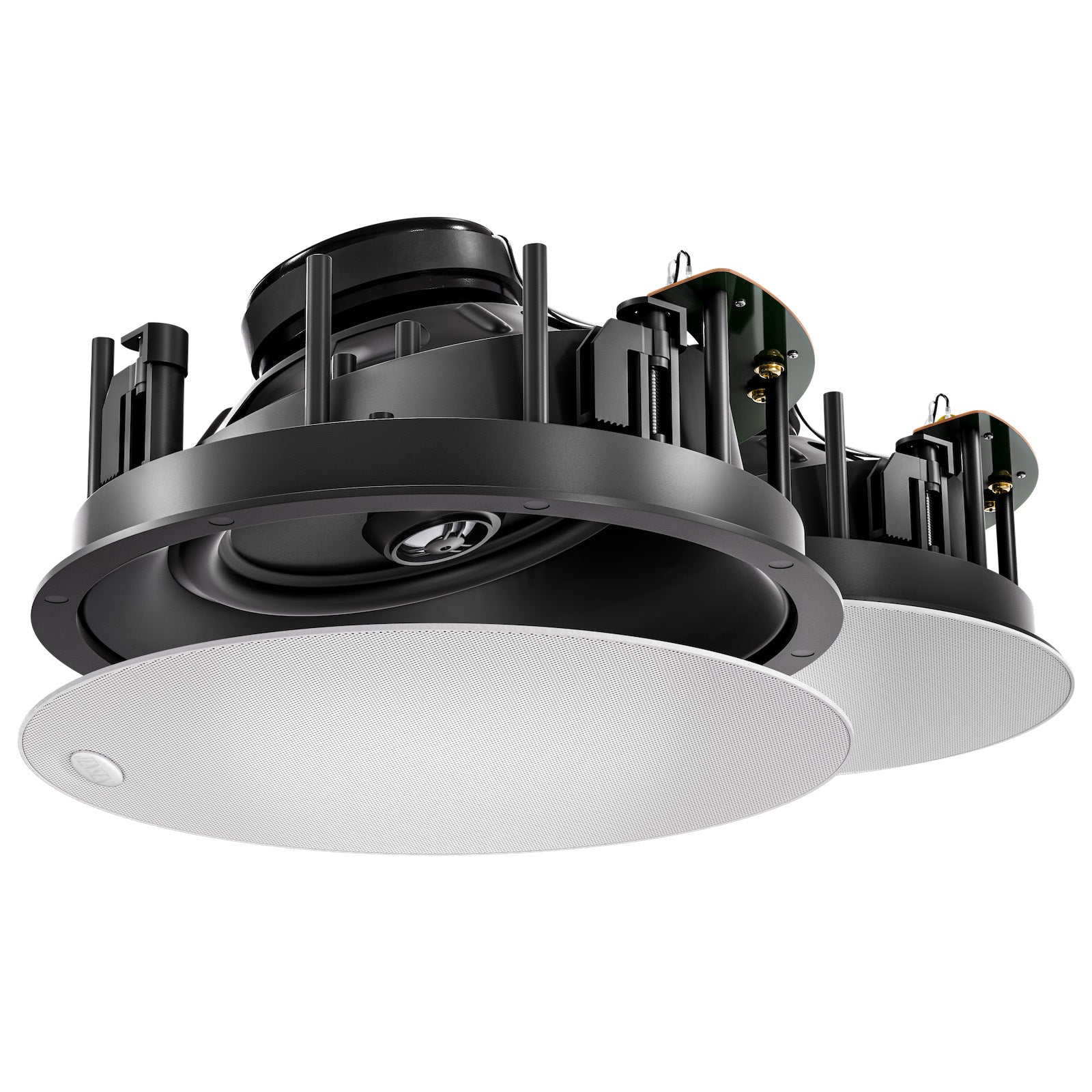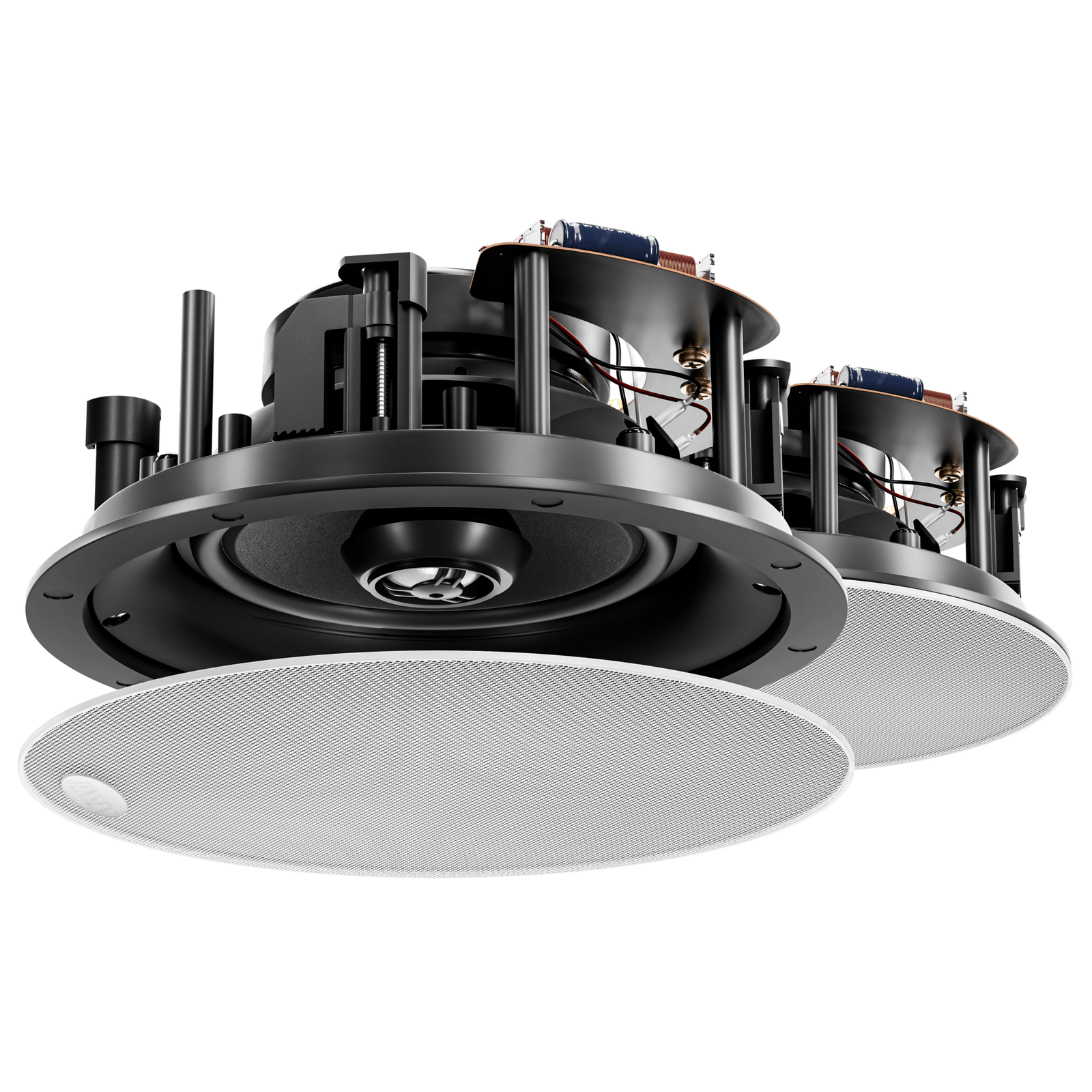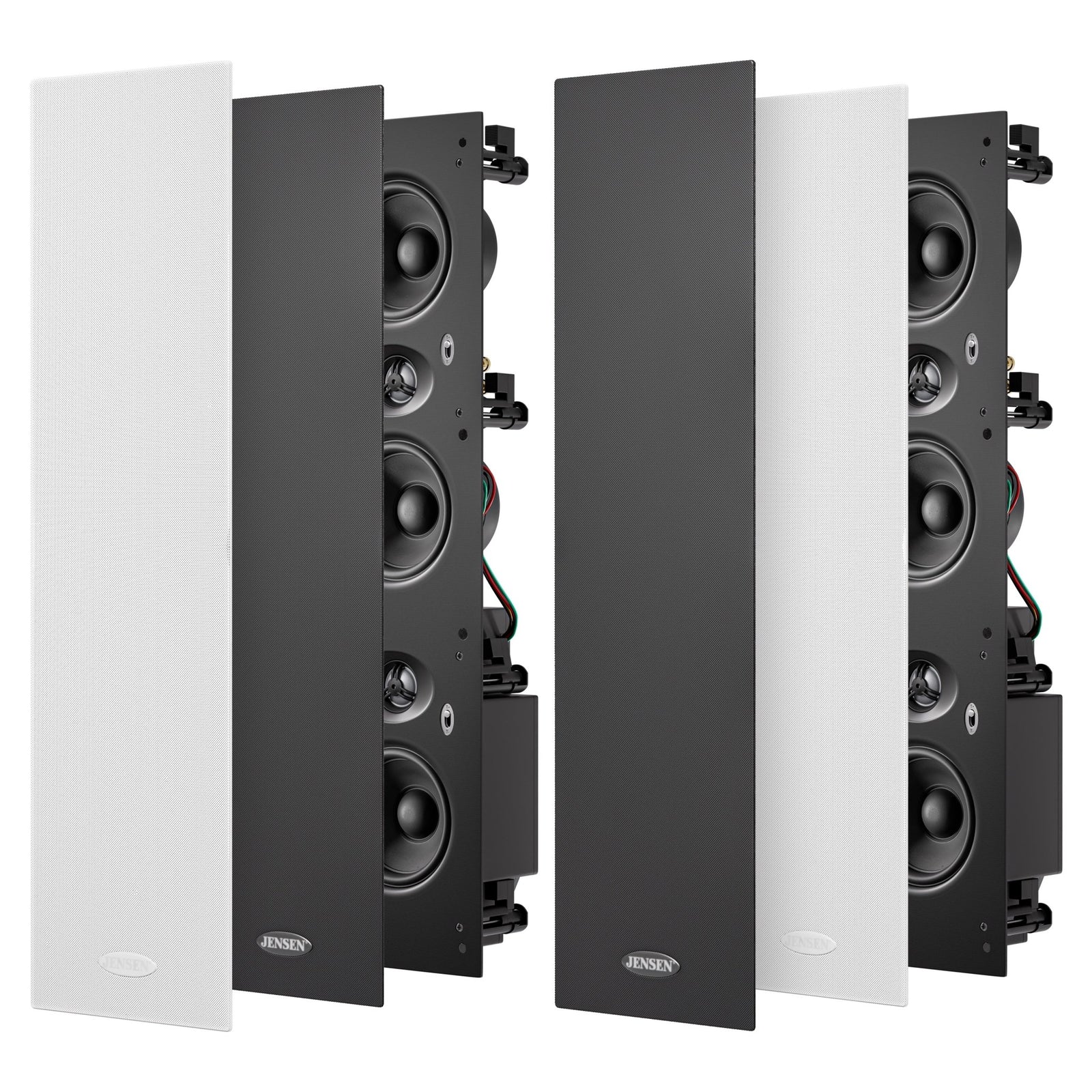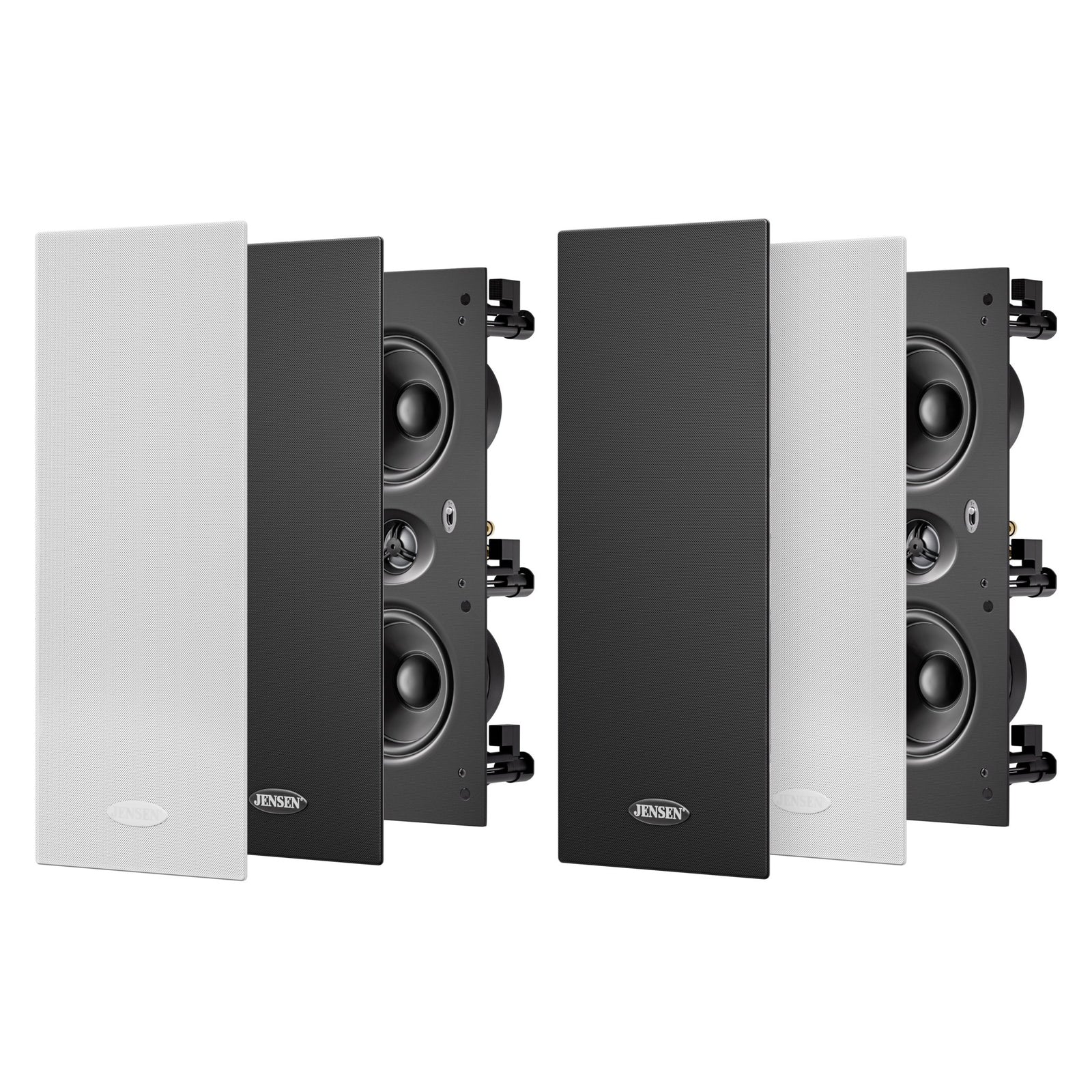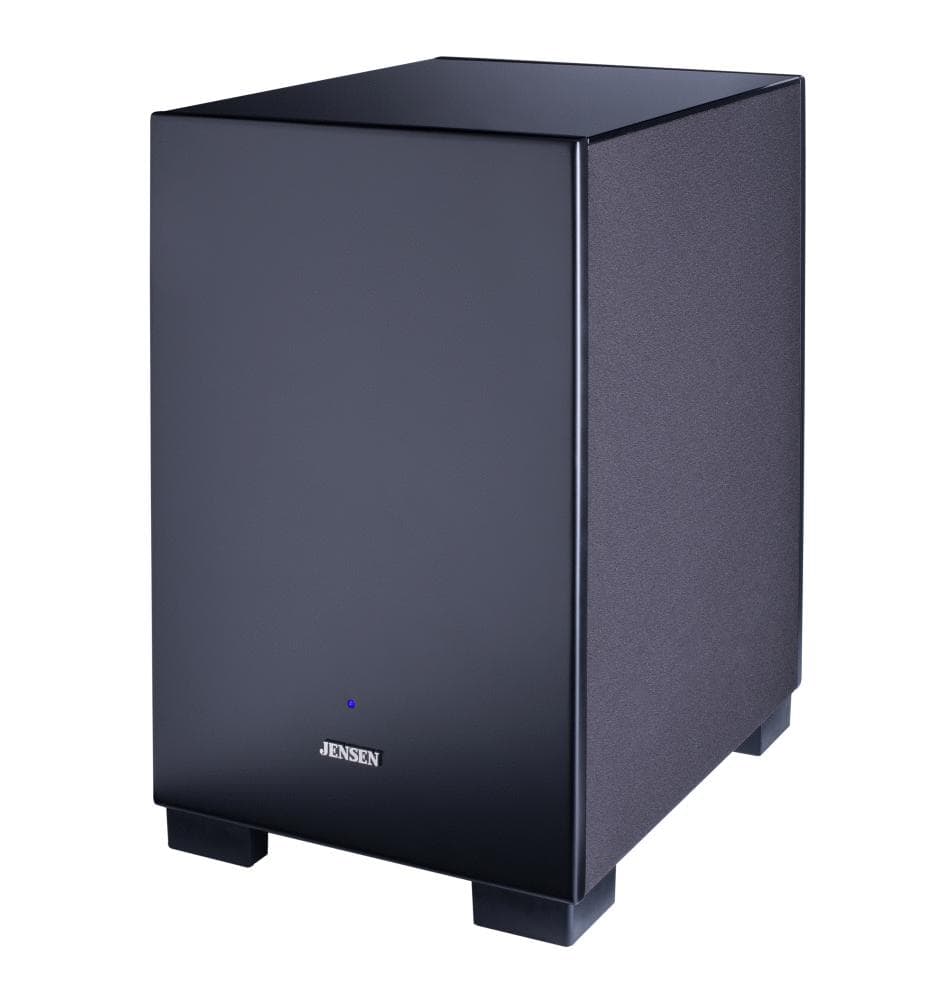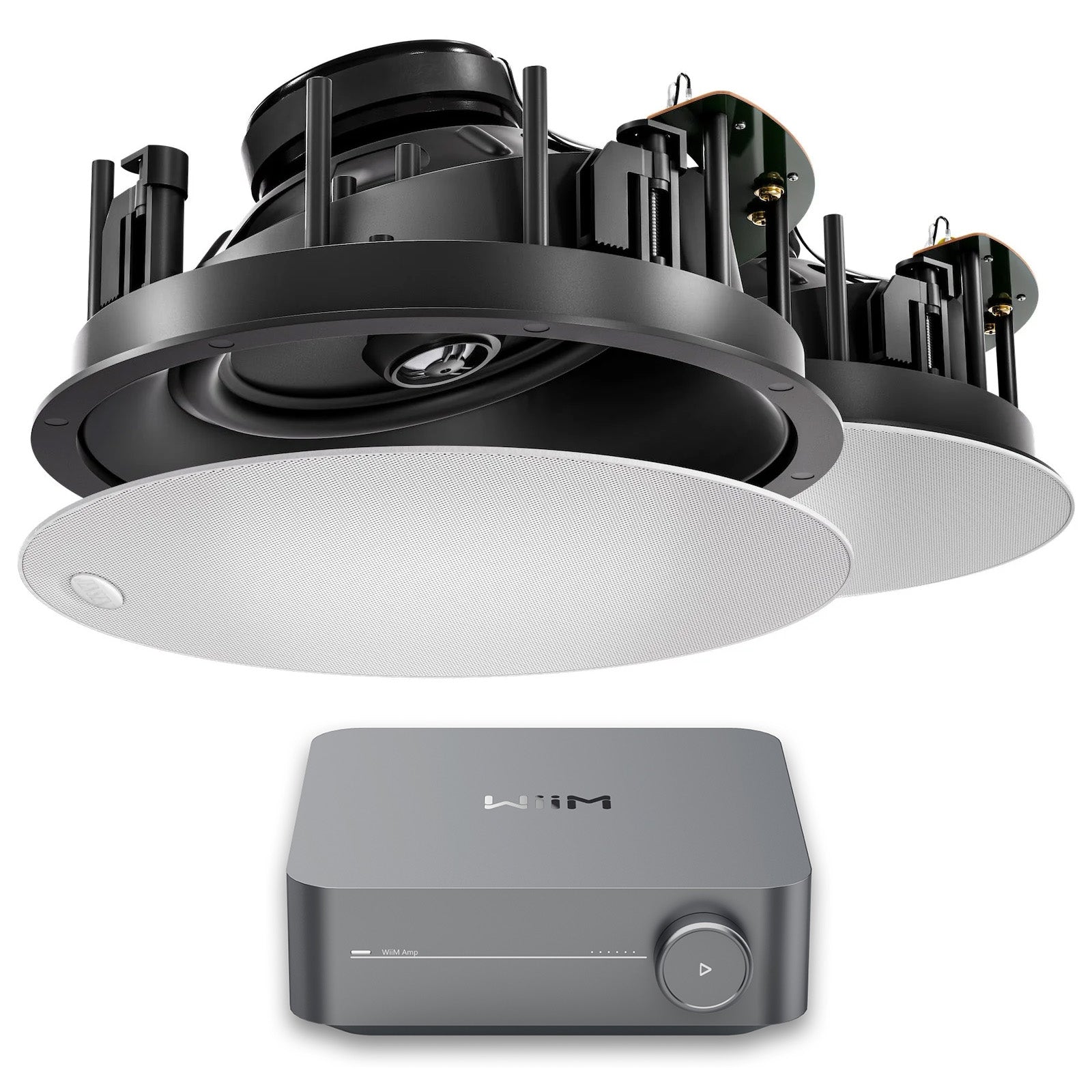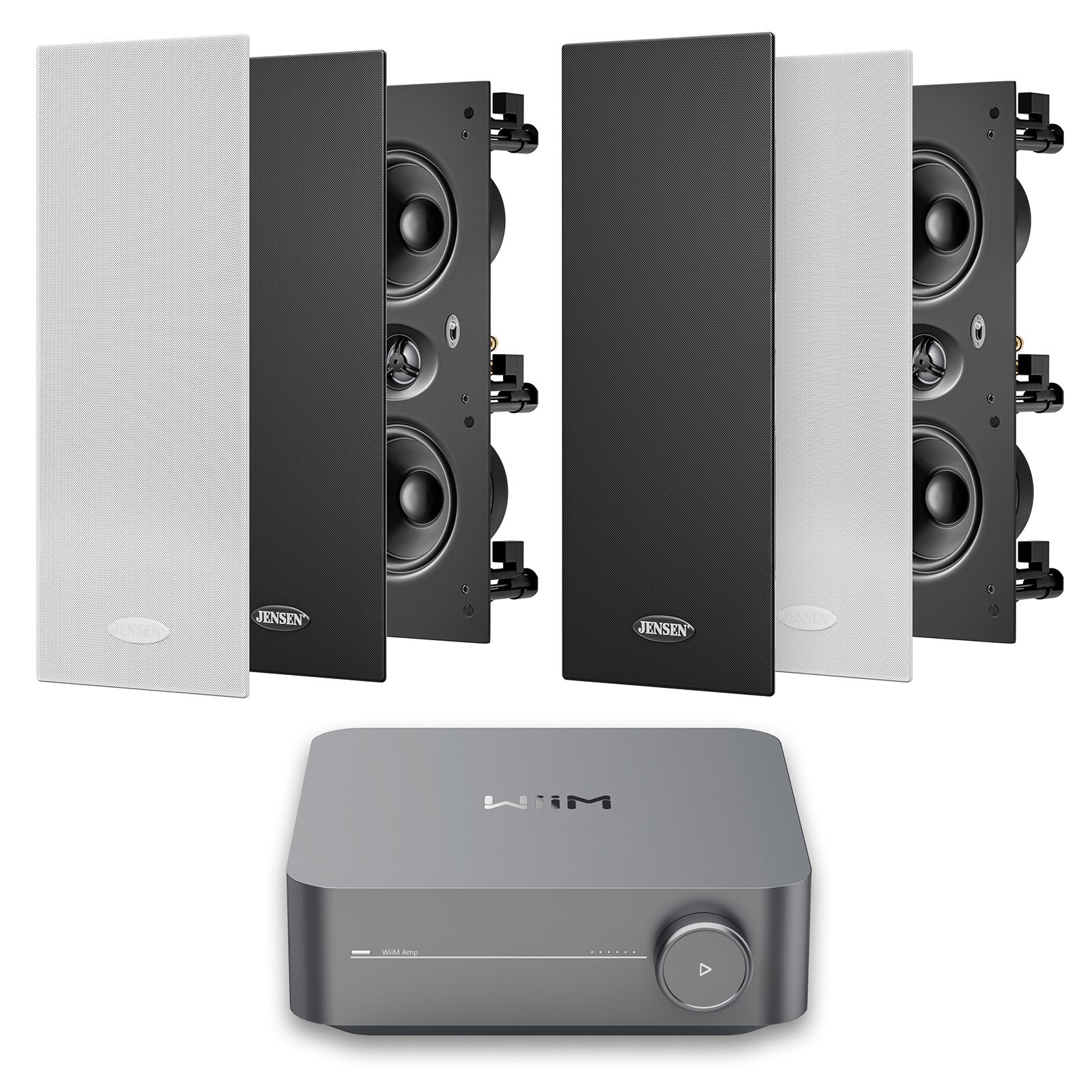TIPS AND TRICKS FOR TROUBLESHOOTING YOUR HOME THEATRE SPEAKERS

Ever feel like technology is out to get you?
In order to do amazing things, hi-fi and home theatre equipment has to be complex. The designers try to keep that complexity “under the hood” so that using your system is simple and easy.
But the fact is, things can and will go a bit wrong as Murphy's Law seems hell bent on proving every now and again.
With a little knowledge you can troubleshoot your audio system and fix most problems that come up.
Read on to find out how.
Contents
- My receiver isn’t turning on (or it’s shutting itself off)
- It says it’s playing but there’s no sound coming from the speakers
- There’s no image coming up on the screen
- My subwoofer isn’t working
- Some but not all speakers are working
- The sound is distorted
- I’m getting error messages, or the software seems buggy
- There’s a constant hum
- I can hear “static”
- There’s an audio delay
Parts Of My System Aren’t Working At All

If one or more parts of your home theatre system aren’t working at all — no sound, no picture, no power — here are a few things to consider.
My receiver isn’t turning on (or it’s shutting itself off)
Modern AV receivers have what’s called “protect mode,” where they will shut off for any number of reasons. Once they shut off and go into protect, they don’t turn back on as normal.
This happens because something inside got too hot, or had an unusual surge of electrical current.
Protect mode usually means the “power light” still comes on, but the unit doesn’t actually turn on — or it shuts off within seconds.
Step one is to search online for the “hard reset” for your receiver. This is usually holding a few buttons down on the front of the unit, pressing power, and waiting 5-10 seconds before releasing those buttons.
It might also involve holding buttons while plugging the unit in. In fact, it’s a good idea to unplug the receiver and plug it back in… even trying a different electrical outlet in the house so you know it’s not the outlet.
Cheap receivers and old, tired ones can go into protect easily. This can be a pain since the AV receiver is the “master hub” of your system. It’s also why it’s well worth getting a high-quality receiver — they’re more resilient and sound way better.
It says it’s playing but there’s no sound coming from the speakers
If sound is coming from some but not all speakers… or if there’s sound but it’s not right… then check out the sections below for those issues.
If there’s no sound at all from the speakers even though it appears to be playing, here’s what you can try.
Check all the cables in your system.
Focus first on the “interconnect” cables: HDMI, optical (also called toslink), RCA cables… the ones that go in between electronic devices. If one of these isn’t connected properly — or is connected to the wrong input that you have selected — you can have zero signal getting through.
You can have an issue with the cable, or you can have an issue with a single input slot on something. So you may need to test your cables and inputs through trial-and-error. Try different input slots and change the input selections. Try a different HDMI cable in the same slots to see if it gets better. Work to “weed out” the problem component — it’s usually one thing.
Of course, if there’s zero sound from any speaker it’s unlikely to be the speaker cables. Check them anyway if you still don’t have sound.
Check the volume settings in every piece of electronics you have. If you’re running an AV receiver and a TV, it’s possible that BOTH volume levels are active. So you could have a high volume setting on the receiver and still hear nothing because the TV volume is at zero.
Note: Never turn an AV receiver to high volume levels if you can’t hear anything!!! It’s very possible to blow something up.
You might also have a third volume setting in play with your source. That could be a streaming device or a mobile phone — it depends on how you have things set up.
A much rarer issue that can cause zero sound from speakers is an incorrect digital “sound mode.” Go into the settings of your receiver (or Blu-ray player, streaming device, etc.) and try an “auto” sound mode. If that doesn’t work, try different modes to see if one works.
I remember standing around with 4 other hi-fi experts, all of us scratching our heads like we’d never seen a speaker before, because a sound mode setting was wrong. It took a month before someone figured it out.

There’s no image coming up on the screen
When everything seems like it’s correct but there’s no image, you have to find the one thing that’s wrong. (It’s usually one thing.)
This is likely to be a setting, a cable or a component.
Start with settings. Check your TV input setting and match it to whatever input slot the HDMI cable is plugged into. If you’re running video through the receiver, check to make sure the HDMI is connected to an output, not an input.
Make sure your TV works in general — are you getting a picture from other sources? Does something come up when you switch it on? Are you getting free-to-air TV service picture?
Then check the HDMI cablesin the chain. Test each cable by swapping it out with another one. You may have one coming from the Blu-ray player to the receiver, and one coming from the receiver to the TV.
My subwoofer isn’t working
If you have a sub but it doesn’t seem to be turning on… or it just isn’t making sound… then there are few possible reasons.
Make sure the “crossover” setting on the back of the sub is high enough. This setting helps trim the frequencies that come out of the sub so voices and “higher” sounds don’t bleed through. It’s good to keep low if your normal speakers have good bass, but you may need to up it a little to hear it.
Another possibility is the AV receiver isn’t sending audio to the subwoofer when you play music. So you have to go into the receiver’s settings and set the subwoofer output to “LFE + main.” (The default setting might be just “LFE.”)

The last thing is the “auto-on” feature that some subs have. This allows the subwoofer to be in standby so you don’t have to switch it on yourself. When your AV receiver starts playing content, the sub detects a signal and comes to life.
It’s possible the receiver isn’t sending a signal — or a strong enough signal — to trigger the sub. This happens a lot when you want to listen at low levels. So you have to go into the receiver settings and turn the sub level up.
Some but not all speakers are working
If one or more speakers are playing, but not all of them are, here are your fixes.
First off make sure the volume is high enough. Surround sound tracks can be subtle. Make sure you’re testing them in a scene with plenty of surround effects.
You can also go into the AV receiver’s settings and change the relative levels of each speaker. There should be a “test tone” feature that plays sound only to one speaker at a time so you can check it. Use it to see if any sound is coming out — if not, check the speaker connections. If speakers are far away you can turn them up relative to the others.
Let’s say one of your two front speakers isn’t working. Then you can swap the cables between the two and see if the problem moves to the other side. If it does, the issue is at the receiver and not the speaker. If not, it’s the speaker.
If your problem is with the surround speakers, you should make sure the source you’re playing from has surround sound audio (DVD, Blu-ray, streaming, etc.). If it does, you may need to change sound modes. This could be on the receiver or the player.
If the problem is with music only, you may want to set the sound mode to multichannel stereo. (Click here to read all about this setting — without it, music won’t play through your surround speakers.)
My System Isn’t Acting Right

If everything is working, but it’s not working like you’d hope… try these tips tricks.
The sound is distorted — surely these speakers sound better than this
Assuming you have high-quality speakers that sound good when they’re played properly, there are a few solutions.
You may have a receiver that’s not good enough. Cranking a cheap amplifier or receiver will deliver a crummy signal to your speakers. They just won’t sound the way they’re capable of sounding.
To test, you really need another amplifier. So just be mindful of this if your receiver was inexpensive, and find time to upgrade to a better one when you can.
You may also have speakers with poor quality components. That might be the speaker drivers (i.e. cones) or the crossover components inside. The only way to fix that is to treat yourself to high-quality speakers that sound much better.
Check the speaker cable connections. This is critical.
- They must be tightly connected.
- Make sure it’s RED to RED and BLACK to BLACK — otherwise you get “phase distortion.”
- Make sure the bare wire ends are NOT touching each other, and are NOT touching the receiver box.
- Check for kinks or split anywhere in the wire.

Maybe they went a bit funny when you were moving them. Or maybe your cat decided the wires would be a great chew toy. Regardless, those draped cables have to stay tight and in tact to sound right.
If you want to make your life easier — and your home theatre lounge MUCH more attractive and tidy — then you should switch to performance in-wall speakers like the ones we keep in the Jensen range.
I’m getting error messages, or the software seems buggy
This is usually caused by a need to update the firmware.
AV receivers and many sources run on software now, and it takes a long time to sort out every tiny hiccup in the system. This might be a bug. It might be a feature that users are begging to have. Whatever it is, it can be added AFTER the product goes to market by using a software update.
So the manufacturers try to make software updates mandatory. Sometimes this leads to issues when you try to avoid updating.
It’s best to buy from a great brand that you trust, and assume all their updates are worthwhile. Get the updates, and your system will run smoother.
This can fix issues like…
- Weird error messages.
- Sudden lagging or slowness
- Buggy behaviors
- Menu items being “greyed out” or gone altogether
- Features not working like they’re meant to
There’s a constant hum
If you’re hearing an unwanted noise, and you’d call it a “hum,” it suggests that there’s bass frequencies droning at all times.
You may have a faulty subwoofer. You may have a bad cable connection. You may have a cable touching something it shouldn’t be.
First, check the subwoofer cable and then all analog RCA cables in your system. Make sure the ends are connected properly and aren’t touching anything. You might find that touching your finger to a cable causes the hum to get louder — this suggests that cable is an issue.
If swapping the cable out and making sure it’s connected cleanly doesn’t help, you might have a faulty sub. Get in touch with the retailer or manufacturer and see if they can help you sort it out.
I can hear “static”
(the truth about noise floor; power and excess equipment)
Here’s the cold fact about static: it’s called “noise floor” and every system has it.
The question is… how audible is it?
If you can only hear it when nothing else is playing, and you turn the receiver WAY UP… then it’s totally normal and it has no effect on the performance of your system.
If you can hear it while playing audio at low volume levels… well then it may be excessive.

It’s usually caused by “noisy” mains electricity, or a bad or faulty design somewhere. There are a number of things you can try. Any one of them might work.
- Try a different power cable
- Try a different electrical outlet
- Try disconnecting other electronics in your house (I’ve heard static go away from disconnecting a microwave in the next room!)
- Try using a filtered power board between the receiver and wall
- Try to use only power cables with 3-prongs (“IEC” cables)
Also make sure you’re using a good quality AV receiver with your speakers — especially if they’re good speakers with a lot of detail. This is because detailed speakers reveal small sounds, and poor receivers give off a louder “noise floor.”
There’s an audio delay — lips are moving before I hear speech!
This is a common issue if there are a lot of components in between the TV and the source. This is because the video signal is being processed by multiple components, and the audio signal gets there immediately.
If you have a delay the first thing you should check is the settings on your TV and possible on your media source or receiver. There is often an “Audio Delay” setting that lets you compensate for lags in the video.
If you’re running from the media source into the TV, and an HDMI ARC or optical cable is bringing the audio back down to the receiver… try running the media source into the AV receiver first. That way, audio and video are synced up as they enter the TV.
What To Do If Your Speakers Are Getting Old — Or They’re Just Not Cutting It

If you’re getting frustrated with your system — maybe issues are starting to pop up or maybe they’ve always popped up — it’s a sign that you’d like to have a home theatre system you can enjoy.
I recommend getting something truly worthwhile and spending your time enjoying it rather than troubleshooting it.
The Jensen range of in-wall and in-ceiling speakers are the ultimate blend of nearly-invisible design and rich, explosive audio performance. They’re build for clarity at low volume levels — so you can hear dialogue at all times — and rich mids and bass, even without a subwoofer if you prefer.
If you want to tidy up your room and get rid of ugly boxes… say goodbye to the dust-collecting trip hazards we call speaker cables… and have a high-performance home theatre system that’ll make your house the place to be… you should take a look at the current Jensen range.
I promise you’ll never look back!
Thanks for reading! If you have any other questions, contact us here.
To learn more, check out these related articles…
Common Mistakes When Setting Up A Home Theater System
5 Reasons To Go In-wall Or In-ceiling For Your Next Home Theatre
Sound Bars Vs Home Theatre
